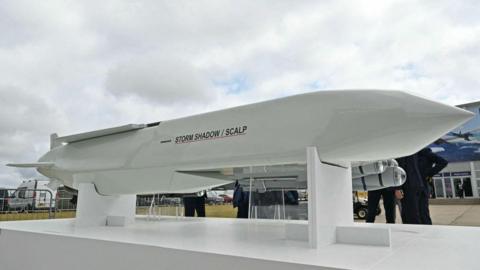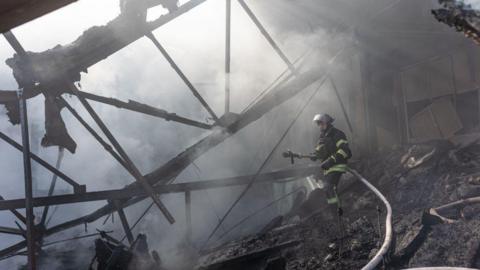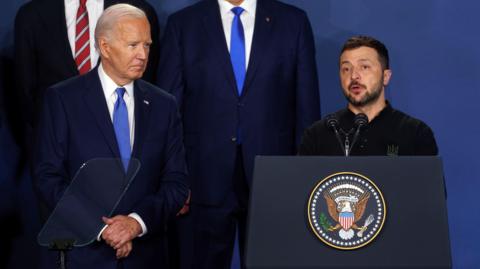Storm Shadow is an Anglo-French cruise missile with a maximum range of around 250km (155 miles). The French call it Scalp.
It is launched from an aircraft, then flies at close to the speed of sound, hugging the terrain, before dropping down and detonating its high explosive warhead.
Storm Shadow - made by manufacturer MBDA - is considered an ideal weapon for penetrating hardened bunkers and ammunition stores, such as those used by Russia in its war against Ukraine.
But each missile costs nearly US$1m (£767,000), so they tend only to be launched as part of a carefully planned flurry of much cheaper drones, sent ahead to confuse and exhaust the enemy’s air defences, just as Russia does to Ukraine.
They have been used with great effect, hitting Russia’s Black Sea naval headquarters at Sevastopol and making the whole of Crimea unsafe for the Russian navy.
Justin Crump, a military analyst, former British Army officer and CEO of the Sibylline consultancy, says Storm Shadow has been a highly effective weapon for Ukraine, striking precisely against well protected targets in occupied territory.
"It’s no surprise that Kyiv has lobbied for its use inside Russia, particularly to target airfields being used to mount the glide bomb attacks that have recently hindered Ukrainian front-line efforts," he says.


